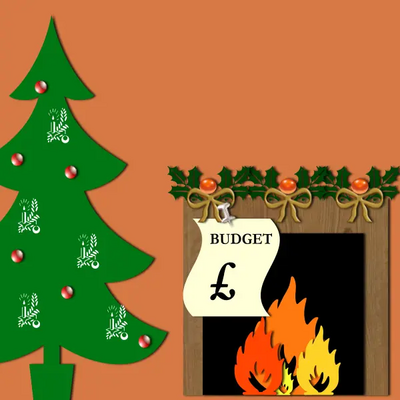Festive fiscal reading for all those who live and work in Suffolk

With Christmas fast approaching, what better way can there be to spend a dark winter's evening than to curl up in your armchair and review Suffolk County Council's budget plans for 2017-2018? Budget consultations may not be everyone's idea of the Scandinavian spirit of hygge, but this may be the start of a new tradition. Throw a Yule log on the fire, set a plate of mince pies close to hand, and start reading… The deadline for submitting your comments is the rather unfestive 30th December 2016, so there's no time to lose.
First of all, the council's consultation home page directs you to go to the Budget For Suffolk web page, where you are asked to download and read the "Budget 2016 - 2017 and Capital Programme 2016 - 2019" document (this report reflects the decisions made last year, implemented in the current budget for 2016-2017). The report is detailed, but it contains important information, affecting "all those who live and work in Suffolk". You are also asked to read the "Budget & Transformation Strategy - 2016-20 (Efficiency Plan)", which lays out the budget gap and the savings proposals that the council hopes will address that gap.
The consultation response questionnaire then asks you to indicate whether you think it is "acceptable" or "not acceptable" to reduce the levels of budget in particular categories of council expenditure. The instructions warn: "For each service please bear in mind that the money would need to be found from another part of the Council if current service levels were to be maintained." In other words, you can't have your cake and eat it. If you want to maintain current budget spending in one area, then the council is saying that you must accept reduction in spending in a different category.
What are these categories?
- highways and roads
- countryside rights of way
- local bus services
- social care services for children, young people and families
- services to tackle crime and anti-social behaviour
- services to tackle drug and alcohol misuse
- social care services for adults
- household waste disposal and recycling
- protection and enhancement of the local environment
- education services and support for schools
- early years childcare including Children Centres
- adult learning and careers advice
- libraries
- cultural & heritage services (includes records offices, museums, arts, sports and physical activity promotion)
- trading standards and consumer advice
- fire and rescue service
Finally, you are asked to state whether you agree or disagree that Suffolk County Council provides value for money.
The budget decisions are presented as stark black-and-white choices, robbing Peter to pay Paul. But why does the questionnaire not explore other options that could sensibly be employed to fill the budget gap that the council is undoubtedly facing? Why not add options for increasing the spending money available, rather than just reallocating the budget totals already in place? A more useful selection of possible answers might be:
- Unacceptable to reduce level of budget in this area. Money should be found from another service area. (Current answer option.)
- Unacceptable to reduce level of budget in this area. Money should be found from an increase in council tax if no alternative can be found.
- Unacceptable to reduce level of budget in this area. Money should be taken from the council's unallocated reserves if no alternative can be found.
- Acceptable to reduce the level of budget in this area. (Current answer option.)
Don't forget - questionnaire responses need to be submitted by 30th December.
Sources:
https://www.suffolk.gov.uk/council-and-democracy/consultations-petitions-and-elections/consultations/suffolk-county-council-budget-consultation-20172018/ [accessed 20 December 2016]
https://www.suffolk.gov.uk/council-and-democracy/budget-council-tax-and-finance/the-budget-for-suffolk/ [accessed 20 December 2016]
https://www.suffolk.gov.uk/assets/council-and-democracy/budget-and-finance/Budget-and-Capital-Programme.pdf [accessed 20 December 2016]
https://www.suffolk.gov.uk/assets/council-and-democracy/budget-and-finance/SCC-Efficiency-Plan-v3.pdf [accessed 20 December 2016]
https://www.surveymonkey.co.uk/r/BudgetSurvey2017 [accessed 20 December 2016]
